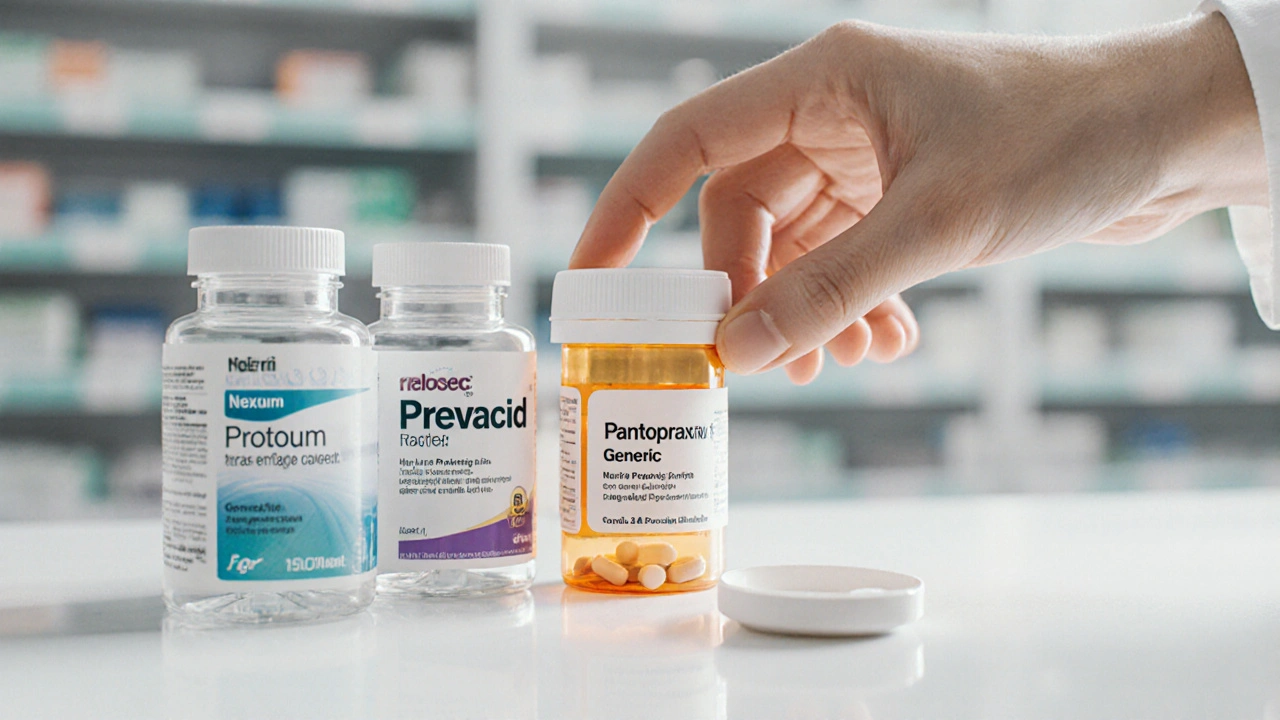
PPI Selection Guide
Find Your Best Acid Reducer
Answer a few questions to determine which acid reducer might work best for your situation.
Key Takeaways
- Protonix (pantoprazole) is a potent, once‑daily PPI with a strong safety record.
- Alternatives such as Nexium, Prilosec, and Prevacid differ mainly in cost, onset speed, and drug‑food interactions.
- Choosing the right acid reducer hinges on insurance coverage, specific diagnosis (GERD, ulcer, H. pylori), and personal tolerance.
- Generic pantoprazole offers the same efficacy as the brand at a fraction of the price.
- For occasional heartburn, an H2 blocker like Pepcid may be a cheaper, effective option.
When treating acid‑related disorders, Protonix is a prescription proton pump inhibitor (PPI) whose active ingredient is pantoprazole. It’s often prescribed for gastro‑esophageal reflux disease (GERD), erosive esophagitis, and Zollinger‑Ellison syndrome. But the market is crowded with other PPIs and even a few H2 blockers that promise similar relief. This guide walks through a side‑by‑side comparison so you can decide whether Protonix is the right fit or if an alternative makes more sense for your health and wallet.
How Protonix Works
Pantoprazole, the molecule behind Protonix, belongs to the PPI class. It irreversibly binds to the H+/K+ ATPase enzyme (the “proton pump”) in stomach parietal cells, shutting down acid production for up to 24 hours. Because the inhibition is irreversible, new pumps must be synthesized before acid secretion resumes, which explains the long‑lasting effect.
What to Look for When Comparing PPIs
Not all PPIs are created equal. Below are the five criteria most patients consider:
- Onset of relief: How quickly symptoms improve after the first dose.
- Cost: Average retail price versus generic equivalents.
- Food interaction: Whether the drug must be taken on an empty stomach.
- Drug‑drug interactions: Especially important for people on anticoagulants or HIV meds.
- Side‑effect profile: Frequency of headache, diarrhea, or long‑term risks.
With those factors in mind, let’s line up the major players.
Comparison Table: Protonix and the Most Common Alternatives
| Brand | Generic Name | FDA Approval Year | Typical Dose | Average Monthly Cost (USD) | Onset of Relief | Food Interaction | Common Side Effects |
|---|---|---|---|---|---|---|---|
| Protonix | Pantoprazole | 2000 | 40mg once daily | $45 (brand) / $12 (generic) | 2‑3days | Take 30min before meal | Headache, diarrhea, nausea |
| Nexium | Esomeprazole | 2001 | 40mg once daily | $55 (brand) / $15 (generic) | 1‑2days | Take 30min before meal | Abdominal pain, flatulence |
| Prilosec | Omeprazole | 1995 | 20‑40mg once daily | $30 (brand) / $8 (generic) | 2‑4days | Take 30‑60min before meal | Headache, dry mouth |
| Prevacid | Lansoprazole | 1995 | 30mg once daily | $35 (brand) / $10 (generic) | 3‑5days | Take 30min before meal | Nausea, constipation |
| Pepcid | Famotidine | 1986 | 20mg twice daily | $18 (brand) / $5 (generic) | Within 1hour | Can be taken with food | Headache, dizziness |
Deep Dive into Each Alternative
Nexium is a PPI that contains the S‑isomer of omeprazole, called esomeprazole. Its biggest selling point is a slightly faster onset, which can matter for severe erosive esophagitis. However, the brand price sits at the top of the range, and insurance formularies often prefer the generic version.
Prilosec is the original omeprazole product, widely available as a generic. It’s the most budget‑friendly PPI and works well for mild‑to‑moderate GERD. The downside is a modestly slower symptom relief compared with esomeprazole.
Prevacid is a lansoprazole‑based PPI that some clinicians favor for patients with a history of CYP450 drug interactions. Its metabolism is less dependent on the CYP2C19 pathway, which can reduce interaction risk when patients are on clopidogrel or certain antidepressants.
Pepcid is an H2 receptor antagonist (famotidine) that blocks histamine‑driven acid secretion. It works faster but is less potent for severe acid hypersecretion. For occasional heartburn, Pepcid may be a cheaper, over‑the‑counter (OTC) alternative.
When Generic Pantoprazole Beats the Brand
Because the active ingredient is the same, generic pantoprazole delivers identical acid suppression. The only real differences are inactive fillers and price. In 2025, the average wholesale price for a 30‑day supply of generic pantoprazole is roughly $12, compared with $45 for Protonix. If you have insurance coverage that doesn’t differentiate between brand and generic, you can safely request the cheaper version.
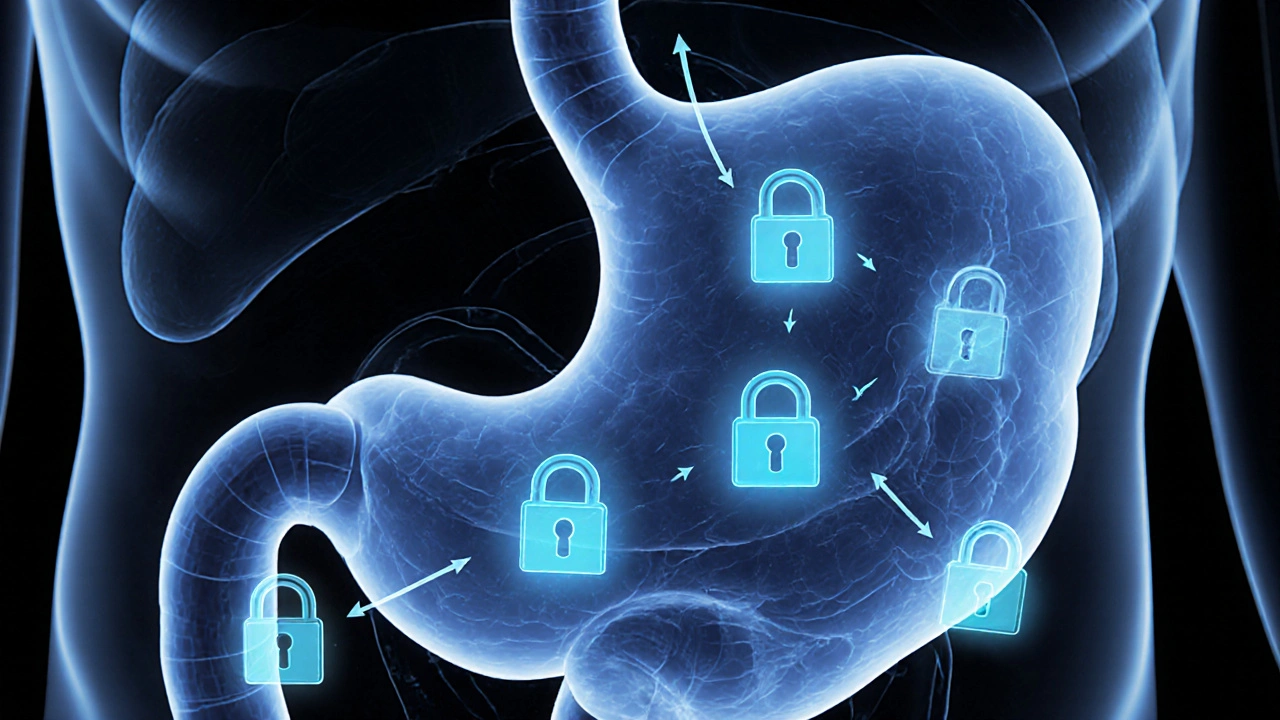
Safety Concerns Across the Class
Long‑term PPI use (over 8‑12 weeks) has been linked to:
- Vitamin B12 deficiency
- Magnesium deficiency leading to muscle cramps
- Increased risk of Clostridioides difficile infection
- Potential kidney disease progression
These risks are class‑wide and not unique to Protonix. If you need a PPI for more than a few months, your doctor may schedule periodic labs or suggest stepping down to an H2 blocker after symptom control.
How to Choose the Right Acid Reducer for You
Follow this quick decision tree:
- Do you need prescription strength? Yes → move to step2; No → consider Pepcid or OTC omeprazole.
- Is cost a primary concern? Yes → generic pantoprazole or generic omeprazole; No → brand PPIs may be okay.
- Are you on clopidogrel or certain antivirals? Yes → consider Prevacid (lansoprazole) because of fewer CYP2C19 interactions; No → any PPI is fine.
- Do you need fast symptom relief (within 24h)? Yes → Pepcid or esomeprazole; No → any daily PPI works.
Discuss your specific medical history with your prescriber; they can tailor the choice to your situation.
Frequently Asked Questions
Can I switch from Protonix to a generic pantoprazole without a new prescription?
In most regions, pharmacists are allowed to substitute a brand‑named PPI with its generic counterpart if the prescriber hasn’t marked it as non‑substitutable. Always confirm with your pharmacy.
Do PPIs like Protonix interact with blood thinners?
Yes. Pantoprazole can increase the plasma concentration of warfarin, so your INR should be monitored more frequently when starting or stopping the PPI.
Is it safe to take an over‑the‑counter PPI while on Protonix?
Taking two PPIs simultaneously offers no added benefit and raises the risk of side effects. If you need extra acid control, discuss dosage adjustment with your doctor instead.
How long can I stay on Protonix safely?
For most patients, a 4‑to‑8‑week course is sufficient to heal erosive esophagitis. Longer use should be re‑evaluated every six months with labs to check magnesium, B12, and kidney function.
What should I do if I miss a Protonix dose?
Take the missed dose as soon as you remember, unless it’s almost time for your next scheduled dose. In that case, skip the missed one and continue with your regular timing. Do not double‑dose.
Next Steps & Troubleshooting
If you’re already on Protonix and still experience frequent heartburn, consider these actions:
- Verify you’re taking the pill 30minutes before breakfast, as food can reduce absorption.
- Ask your doctor about a dose increase (e.g., 80mg split into two doses) or a switch to esomeprazole for a quicker response.
- Check for drug‑drug interactions-especially with antiplatelet agents, certain HIV meds, and some antifungals.
- Explore lifestyle tweaks: elevate the head of the bed, avoid late meals, and limit nicotine and alcohol.
When cost is the main barrier, request a prescription for generic pantoprazole or look for discount programs offered by major pharmacy chains. For those who only need occasional relief, an OTC H2 blocker like Pepcid can spare you a monthly prescription entirely.
Protonix comparison is now clearer: the brand shines in consistency and insurance coverage, but the generic version gives the same results for less money. Alternatives such as Nexium provide a faster onset at a higher price, while Pepcid offers rapid but milder relief for infrequent symptoms. Use the decision criteria above to match the right acid reducer to your health needs and budget.

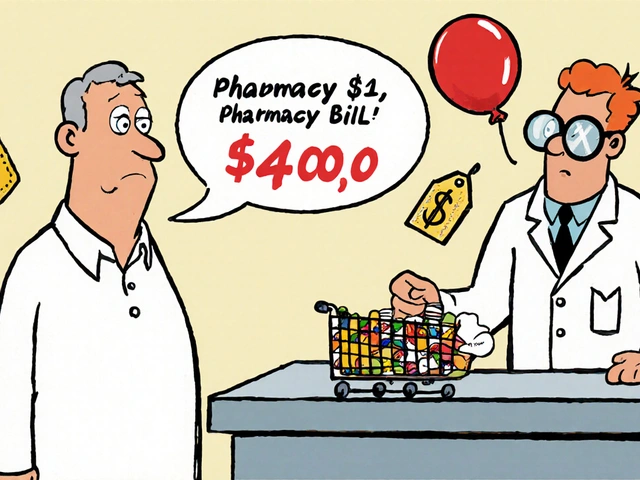
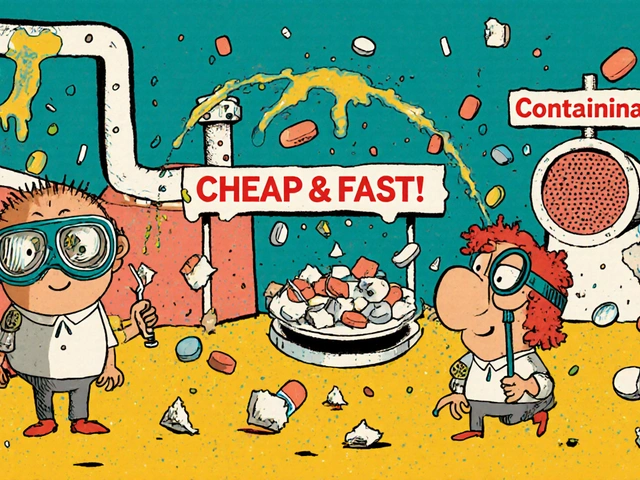
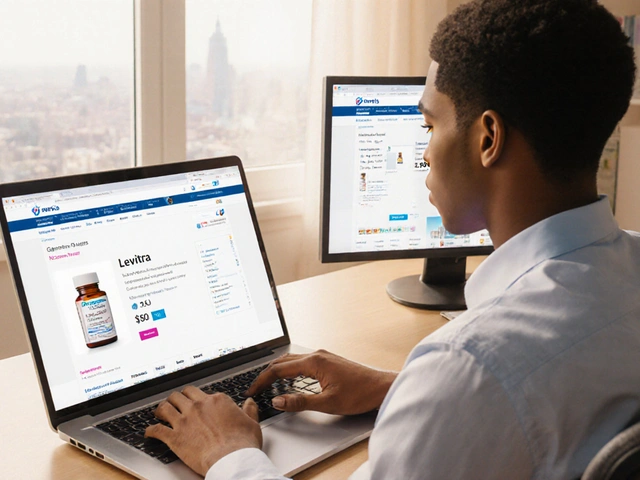
Alex Iosa
October 12, 2025It is disconcerting how the pharmaceutical industry routinely prioritizes profit over patient welfare. The guide subtly nudges readers toward brand‑name drugs, perpetuating a cycle of dependency. One must ask whether the data presented have been filtered to protect corporate interests. In any case, consumers deserve transparent information without hidden agendas.
melissa hird
October 24, 2025Ah, the noble quest for “objective” medical advice-how delightfully quaint. Your concerns about profit motives are noted, yet the table you quoted is remarkably comprehensive, albeit dressed in corporate chic. One might even applaud the effort to list generic alternatives, a rare gesture of generosity. Still, the subtle marketing veneer is as palpable as a staged applause. Perhaps the authors simply wanted to boost click‑through rates, not to conspire. In any event, the comparison does offer a useful, if slightly glossy, reference point.
Abraham Gayah
November 4, 2025Oh, the drama of choosing a pill!
rajendra kanoujiya
November 15, 2025Actually, the whole PPI frenzy is overblown; lifestyle tweaks can outshine any acid‑suppressor. You can manage reflux with diet, timing, and stress control without subscribing to a monthly pharmacy bill. The guide’s emphasis on medication feels like an excuse to sell more prescriptions.
Caley Ross
November 26, 2025The article does a solid job laying out the key factors-cost, onset, and drug interactions. I appreciate the clear decision tree; it makes the process less intimidating. For most patients, generic pantoprazole hits the sweet spot between efficacy and price. Just remember to take it before meals, as the guide reminds us.
Bobby Hartono
December 7, 2025Let me just say, reading through this guide reminded me of the countless evenings I spent juggling my own GERD symptoms while juggling a full‑time job and a family. First, the way the authors break down the criteria-onset, cost, food interaction-makes it feel like a friendly conversation rather than a dry textbook. Second, the inclusion of an H2 blocker as a budget‑friendly alternative shows real empathy for those of us who pinched every penny during lockdown. Third, the safety section honestly reassures me that long‑term use isn’t a death sentence, though I still schedule periodic labs because, you know, better safe than sorry. Fourth, the decision tree is practically a flowchart you could print and stick on the fridge. Fifth, I love how they mention insurance nuances; it saved me a mixtape of phone calls with my insurer. Sixth, the table is so straightforward that even my grandma could pick the right pill without asking for help. Seventh, the tip about taking the pill 30 minutes before breakfast is a small detail that makes a big difference. Eighth, the warning about warfarin interaction is a lifesaver for anyone on blood thinners. Ninth, the suggestion to consider lifestyle tweaks before upping the dose aligns with a holistic approach I value. Tenth, the clear distinction between brand and generic pricing demystifies the whole cost debate. Eleventh, the mention of Clostridioides difficile risk reminds us that “more isn’t always better.” Twelfth, the article’s tone stays neutral, never pushing a particular brand, which builds trust. Thirteenth, the FAQ section anticipates common worries-like missing a dose-without sounding condescending. Fourteenth, the final paragraph neatly summarizes the whole thing, making it easy to share with a friend. Fifteenth, the inclusion of both US and generic names helps international readers too. Sixteenth, overall, this guide is a practical, patient‑centered resource that respects both health outcomes and wallets.